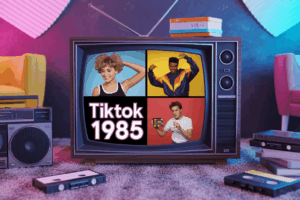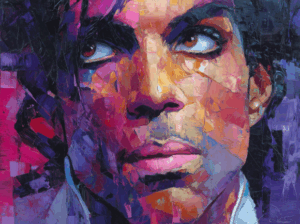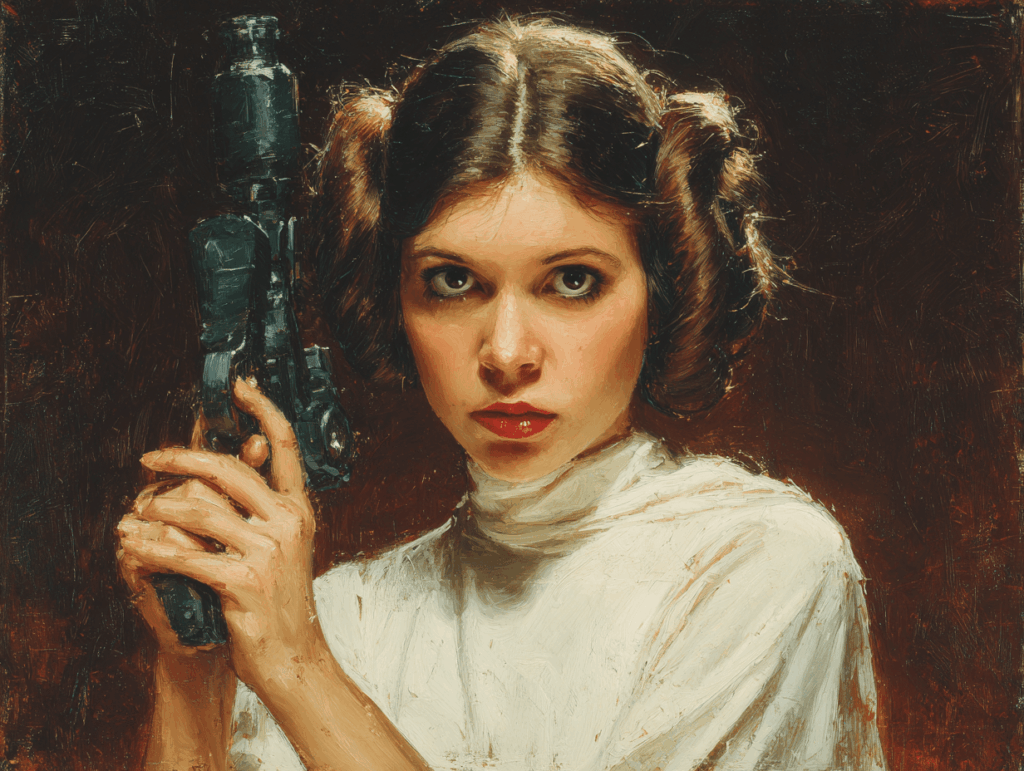
Ever wondered what moviegoing was like before lightsabers, Death Stars, and “I am your father”? In 1977, people lined up around blocks for a film nobody expected to succeed. A space opera that would rewrite Hollywood’s playbook forever.
You probably know Star Wars changed cinema history, but the how and why behind its galactic impact on movie franchising still shapes every blockbuster you watch today.
When George Lucas unleashed Star Wars on unsuspecting audiences, he didn’t just create a hit movie—he birthed a cultural phenomenon that transformed how films are made, marketed, and merchandised.
What makes this 45-year-old film still matter in an age of streaming and superheroes? The answer lies in understanding exactly what happened in those theater seats back in ’77…
Hollywood Before Star Wars: Setting the Scene
A. The Creative Drought of the Mid-70s
Remember 1975? While you were rocking bell-bottoms, Hollywood was stuck in a creative rut. Major studios played it safe, recycling formulas that worked before. The risk-taking spirit of the early 70s had faded into a parade of predictable dramas and sequels nobody asked for.
Box office numbers were tanking. Executives sweated in their corner offices. Film after film flopped as audiences stayed home, bored with what theaters offered.
The magic was gone. The movie business needed something – anything – to shake things up.
B. The Dominance of Gritty Realism
The 70s film landscape? Think grim, dark, and painfully realistic. Directors like Scorsese and Coppola ruled with unflinching looks at American life. “The Godfather,” “Taxi Driver,” and “One Flew Over the Cuckoo’s Nest” weren’t exactly feel-good popcorn flicks.
These films were brilliant, sure. But they left little room for imagination or escapism. Cinema was all about exposing harsh truths – not transporting you to other worlds.
Critics loved this stuff. Regular moviegoers? Not so much. They were hungry for something that would let them dream again.
C. Studio Control and the Director’s Limited Vision
Hollywood studios gripped creative control with iron fists. Original ideas? Risky concepts? Good luck getting those approved. The studio system wasn’t built for dreamers – it was built for profit.
Directors faced impossible constraints:
- Limited budgets for special effects
- Pressure to cast only established stars
- Creative interference from executives
- Technical limitations of the era
Science fiction was considered box office poison. Space movies? They were cheap B-movie fodder, not serious cinema. Fantasy was for kids, not mainstream audiences.
Then came a young filmmaker named George Lucas with a crazy idea about space wizards and laser swords…
The Revolutionary Production of Star Wars
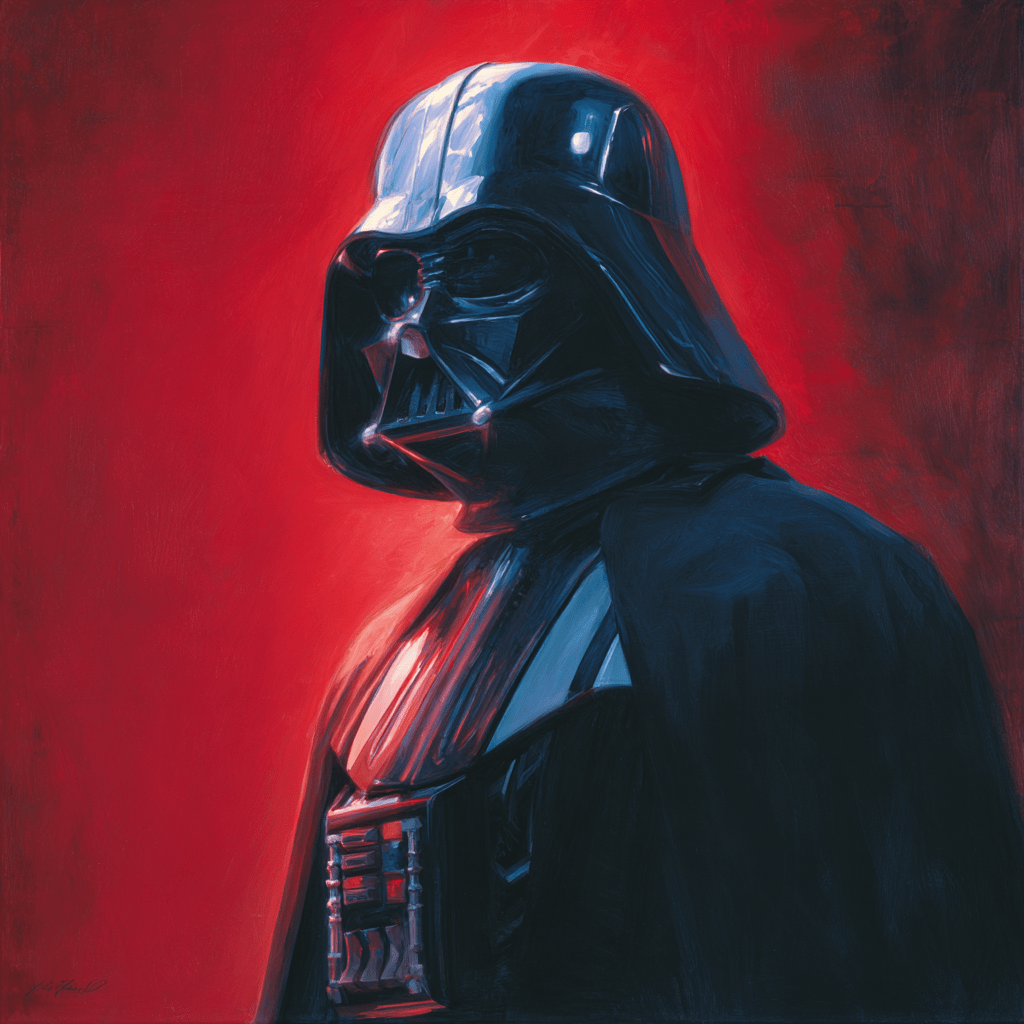
George Lucas’s Unprecedented Vision
When most directors pitched sci-fi movies in the mid-70s, studio execs rolled their eyes. Space adventures? In Hollywood’s serious, gritty era? Good luck with that.
But George Lucas wasn’t most directors.
What made Lucas’s vision revolutionary wasn’t just his imagination – it was his absolute stubbornness. When 20th Century Fox finally greenlit Star Wars, they saw it as a small, quirky project. Lucas saw it differently.
He took a pay cut as director to keep creative control. Smart move. While the studio expected a modest film, Lucas was building an entire universe with its own history, politics, and visual language.
Remember, this was 1977. No CGI. No digital anything. Just a filmmaker crazy enough to think he could put his wildest space dreams on screen with miniatures, matte paintings, and pure creativity.
Creating Industrial Light & Magic from Necessity
Fox had dissolved their special effects department years earlier. Oops.
So what did Lucas do? Created his own damn effects company in a warehouse in Van Nuys, California.
Industrial Light & Magic wasn’t born from luxury – it came from desperation. Lucas assembled a ragtag team of college students, model makers, and camera nerds who literally invented techniques as they went along.
The motion-control camera system they created? Revolutionary. The way they shot miniature spaceships against blue screens? Game-changing.
These weren’t polished professionals with decades of experience. They were twenty-somethings working insane hours, blowing stuff up in parking lots, and figuring out how to make the impossible look real.
The Birth of Modern Sound Design
Star Wars didn’t just change how movies looked – it transformed how they sounded.
Ben Burtt, a young sound designer, spent a year recording everything from broken TVs to animals at the zoo. Darth Vader’s breathing? A scuba regulator. The lightsaber hum? A mix of movie projector motors and TV interference.
Burtt essentially invented the role of “sound designer” as we know it today. Before Star Wars, sound was an afterthought. After Star Wars, it became a crucial storytelling tool.
And let’s not forget John Williams’ score – orchestral music when disco and rock dominated. Lucas went old-school, drawing on classical themes to create something that felt both ancient and futuristic.
Merchandising: A New Revenue Stream
The biggest joke in Hollywood became the biggest payday in history.
When Lucas negotiated his Star Wars contract, Fox gave him the merchandising rights. Why? Because merchandise wasn’t worth much for most films.
Boy, did that backfire for them.
When Kenner couldn’t produce enough action figures for Christmas 1977, they sold empty boxes with IOUs inside. Let that sink in – kids literally opened Christmas presents containing promises of toys.
Lucas didn’t just change filmmaking; he created the modern entertainment business model. Today’s Marvel movies with their action figures, video games, and theme park rides? They’re following the Lucas playbook.
The Star Wars merchandising revolution proved that a movie could be more than a movie. It could be the center of an entire commercial ecosystem.
The Box Office Phenomenon That Rewrote the Rules
A. Opening Weekend Metrics That Shocked the Industry
Nobody saw it coming. Not 20th Century Fox. Not theater owners. Not even George Lucas himself.
When Star Wars hit theaters on May 25, 1977, it opened in just 32 theaters. That’s right—32. Compare that to modern blockbusters that debut on 4,000+ screens.
Yet those few theaters were absolute madhouses. People lined up around blocks, some camping overnight. By Sunday evening, Star Wars had raked in $1.6 million—averaging a staggering $50,000 per theater.
Theater owners frantically called Fox demanding prints. One California theater played it continuously for 24 hours straight just to handle demand.
Within seven days, Star Wars had broken weekend records previously held by Jaws. By the end of its first run, it had earned $221 million domestically—equivalent to about $1 billion today.
B. Word-of-Mouth Marketing in the Pre-Internet Era
This wasn’t the age of Twitter reactions or Instagram stories. Star Wars spread the old-fashioned way: people couldn’t stop talking about it.
Kids who saw it on Friday were back on Saturday with their parents. Parents who took their kids were returning with friends. The cycle was relentless.
What made this word-of-mouth explosion unique was how it crossed demographics. College professors discussed it with students. Grandparents took grandkids. For months, you couldn’t attend a dinner party without someone bringing up Star Wars.
Newspapers ran stories about “repeat viewers”—fans who’d seen it 10, 20, even 100 times. These superfans became unofficial marketers, practically dragging friends and family to theaters.
C. Global Appeal That Transcended Cultural Boundaries
Star Wars didn’t just conquer America—it took over the world.
In Japan, it outgrossed nearly every domestic film. In France, intellectuals wrote essays analyzing its mythological structure. In the Soviet Union, bootleg copies circulated despite official censorship.
The film’s genius lay in its universality. The story of Luke Skywalker resonated across cultures because it tapped into what Joseph Campbell called “the hero’s journey”—a narrative pattern found in myths worldwide.
Language barriers hardly mattered. The visual storytelling was so strong that audiences could follow along even when subtitles were poor. The film’s good-versus-evil simplicity transcended cultural differences, while its aliens and droids fascinated viewers regardless of nationality.
By 1978, Star Wars had become the highest-grossing film worldwide, proving that Hollywood could create truly global entertainment—a business model that dominates to this day.
Technological Innovations That Transformed Filmmaking
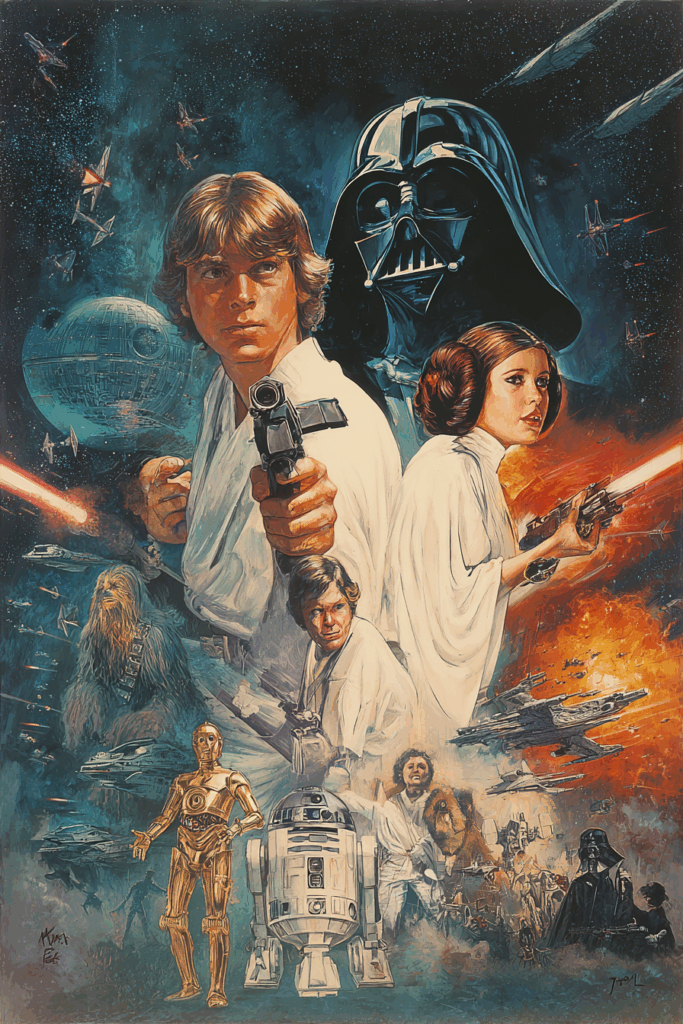
Special Effects Breakthroughs
The special effects in Star Wars weren’t just good for 1977 – they were revolutionary. Before this film, sci-fi movies were mostly clunky models on visible strings. George Lucas changed everything by founding Industrial Light & Magic, a team created specifically to bring his impossible vision to life.
The Death Star trench run? That used a camera system called “motion control” that could perfectly repeat the same camera movement multiple times, allowing separate elements to be combined seamlessly. Nobody had ever seen space battles like this before – fast, dynamic, and utterly convincing.
What’s crazy is how much they had to invent on the spot. When traditional blue-screen technology wasn’t working, they created their own. When existing model techniques couldn’t deliver the realism Lucas demanded, they pioneered new approaches using detail and lighting that tricked the eye into seeing massive scale.
The Birth of the Modern Blockbuster Sound
Star Wars didn’t just change what movies looked like – it transformed how they sounded.
Ben Burtt’s sound design created an entirely new language of audio effects. The iconic lightsaber hum? That’s a blend of movie projector motors and feedback from a TV set. Darth Vader’s breathing? A scuba regulator recorded and processed.
But the real game-changer was the introduction of THX sound standards and the Dolby Stereo soundtrack that surrounded audiences in ways they’d never experienced. Before Star Wars, movie sound was an afterthought. After it, sound became a crucial storytelling element that other filmmakers couldn’t ignore.
Camera Techniques That Became Industry Standards
Lucas didn’t just revolutionize special effects – he changed how directors approached basic camera work in sci-fi and action films.
The fast-paced, documentary-style shooting brought an immediacy to space battles that made them feel like WWII dogfights. The use of wipes and iris transitions – inspired by Kurosawa’s samurai films – became signature elements that countless movies would later imitate.
Most importantly, Lucas proved you could combine handheld, gritty camerawork with spectacular visual effects. This marriage of documentary-style realism with fantasy elements created a visual language that modern blockbusters still use today.
Practical Effects That Still Hold Up Today
What’s mind-blowing about the original Star Wars is how well its practical effects stand the test of time.
The film used over 360 meticulously detailed miniature models, with the largest Star Destroyer model spanning three feet. The cantina scene featured 30+ alien creatures – all practical makeup effects and puppets created by Rick Baker’s team.
The lightsaber battles were accomplished with rotating poles covered in reflective material that caught the light just right. Even the laser blasts were hand-rotoscoped frame by frame.
These techniques created a tangible world that still feels real 45+ years later, while many CGI-heavy films from just the 1990s look terribly dated today.
Editing Rhythms That Influenced Generations
The cutting style of Star Wars completely rewrote action film editing.
Editor Paul Hirsch, along with Richard Chew and Marcia Lucas, created a rhythm and pacing previously unseen in sci-fi films. The opening Star Destroyer sequence alone – with its model work, sound design, and cutting patterns – established a visual grammar that action directors have been copying ever since.
The cross-cutting during the finale between the Death Star battle, the control room, and the heroes’ reactions built tension in ways that became the template for virtually every blockbuster climax that followed.
And those famous screen wipes? They didn’t just look cool – they allowed Lucas to move between vastly different locations and storylines without confusing the audience, a technique that’s become standard in big-canvas storytelling.
Cultural Impact Beyond the Theater
The Hero’s Journey Revitalized for Modern Audiences
Star Wars didn’t just entertain us in 1977—it rewired how we connect with stories. George Lucas took Joseph Campbell’s mythological framework and made it accessible to everyone wearing bell-bottoms and eating Pop Rocks.
What made it stick? Simple. Luke Skywalker wasn’t born special. He was a whiny farm boy dreaming of something bigger. Sound familiar? That’s why we couldn’t look away.
Before Star Wars, Hollywood was deep into gritty realism and downer endings. Lucas flipped the script. He brought back clear heroes and villains when everyone else was painting in shades of gray.
Kids who’d never heard terms like “monomyth” were suddenly living it through Luke’s journey from nobody to somebody. The film spoke to universal feelings—wanting to discover your purpose, fighting against impossible odds, and finding your tribe.
Merchandising Revolution That Changed Toy Industries
Remember when movies ended when you left the theater? Star Wars shattered that boundary.
The genius wasn’t just making toys—it was creating a universe kids could continue at home. When Kenner couldn’t produce enough action figures for Christmas 1977, they sold empty boxes with IOUs inside. And parents actually bought them!
Before Star Wars, movie merchandise was an afterthought. After? It became the business model. The numbers tell the story:
| Year | Star Wars Merchandise Revenue |
|---|---|
| 1977 | $100 million |
| 1978 | $500 million |
| By 1985 | Over $2.6 billion |
Every blockbuster since—from Batman to Marvel—follows this blueprint. The toy aisles at Target? They look that way because of decisions made in 1977.
Creating Fandom as We Know It Today
Star Wars didn’t just attract viewers—it created believers.
Fan conventions exploded. People learned Wookiee phrases. Adults and kids lined up together for repeat viewings—not because the marketing told them to, but because they genuinely couldn’t get enough.
What Star Wars did differently was create space for fan participation. The universe felt lived-in, with background characters that sparked imagination. Who was that cool bounty hunter? What’s the story with the cantina aliens?
These unanswered questions created the first major fan theories, fan fiction communities, and eventually, the internet forums we know today. Star Wars fans didn’t just consume content—they expanded it.
The film showed Hollywood that audiences would become ambassadors if given the right universe to play in. Modern fandoms for everything from Harry Potter to Game of Thrones follow patterns established by those first Star Wars devotees who couldn’t stop talking about a galaxy far, far away.
The Birth of the Modern Blockbuster Era
New Studio Investment Strategies
Before Star Wars, studios spread their money across many small-to-medium budget films, hoping a few would hit. After 1977? Everything changed.
Studios saw how Lucas’ space opera raked in $775 million on a $11 million budget. The math was simple: one massive hit could outperform dozens of modest successes.
This sparked a fundamental shift. Rather than funding twenty $2 million projects, executives began betting on fewer, bigger-budget films with franchise potential. Star Wars wasn’t just a movie—it was a goldmine of toys, comics, and eventually, sequels.
Warner Bros, Paramount, and Universal quickly followed suit. Their boardrooms buzzed with one question: “Could this be the next Star Wars?” Risk-averse studios suddenly embraced the high-stakes gamble of tentpole filmmaking.
Summer Release Scheduling Becomes Standard
Remember when summer meant reruns and B-movies? Star Wars blew that tradition to bits.
Fox’s decision to release Star Wars in May 1977 seemed odd at first. Summer was considered a dead zone. But when lines wrapped around blocks for weeks, studios took notice.
Suddenly, Memorial Day through Labor Day became prime real estate on the release calendar. Jaws had tested these waters in 1975, but Star Wars cemented summer as blockbuster season.
The Rise of the Four-Quadrant Film
Star Wars accomplished something remarkable: it appealed to literally everyone.
Males, females, adults, children—all four “quadrants” of the audience demographic flocked to theaters. Some multiple times.
Before 1977, studios targeted specific demographics: kids’ films for kids, adult dramas for adults. Star Wars proved a single film could capture everyone’s imagination and wallet.
This created the template for the modern four-quadrant blockbuster: spectacular visual effects, simple good-vs-evil storytelling, memorable characters, and merchandising potential that extended the experience beyond the theater.
Every major studio has chased this formula since, from Jurassic Park to Marvel’s entire cinematic universe.
Star Wars’ Lasting Impact on Today’s Cinema
The Marvel Cinematic Universe as Star Wars’ Descendant
The DNA of Star Wars runs straight through the MCU’s veins. Kevin Feige doesn’t hide his Star Wars fandom—he built an empire using Lucas’s blueprint. Both universes feature interconnected stories, heroes with special abilities, and an overarching battle between good and evil.
Watch how Marvel films balance humor with action and spectacle, just like the original Star Wars did. That wasn’t common before 1977. The post-credit scenes? Pure Lucas-style universe expansion that keeps fans hungry for more.
Modern Directors Directly Influenced by Lucas
J.J. Abrams, Rian Johnson, and Jon Favreau aren’t just Star Wars directors—they’re Star Wars kids. They grew up with these films reshaping their creative DNA.
“Star Wars showed me movies could build worlds I wanted to live in,” Abrams once said.
James Cameron, Christopher Nolan, and Taika Waititi have all pointed to Star Wars as their cinematic awakening. The visual language Lucas created—wipes, lived-in worlds, practical effects mixed with cutting-edge technology—appears in countless films today.
How The Franchise Model Evolved from 1977
Before Star Wars, sequels were afterthoughts. After Star Wars, they became planned expansions.
The modern franchise playbook comes directly from Lucas’s vision:
- Merchandise tied to film releases
- Multiple entry points for new fans
- Expanded universe content between major releases
- Building anticipation years in advance
Disney’s approach to Marvel, Star Wars, and their live-action remakes? It’s the Lucas model supercharged.
Technical Innovations Still Building on Star Wars’ Foundation
ILM, the effects house Lucas built for Star Wars, remains at the cutting edge decades later. The Mandalorian’s revolutionary StageCraft technology—massive LED screens replacing green screens—descends directly from Lucas’s push to solve filmmaking problems with new technology.
Modern CGI, motion capture, and virtual production techniques all trace back to Star Wars’ innovations. Even sound design fundamentally changed after Ben Burtt created the iconic audio landscape of lightsabers and blasters.
Today’s immersive theater experiences? They’re trying to recreate what audiences felt in 1977.
Star Wars Memorabilia!
Shop with links below for best prices.
Listen, owning a piece of Star Wars history isn’t just about being a collector – it’s about holding onto that magic feeling you got when you first watched the Millennium Falcon blast into hyperspace.
The market for original Star Wars collectibles has gone absolutely bonkers in recent years. Those vintage Kenner action figures still in their packaging? Some have sold for thousands. Even items from the more recent decades have serious value for the right buyer.
But here’s the thing – you don’t need to drop a fortune to own something meaningful. There are plenty of officially licensed replicas, anniversary editions, and modern collectibles that capture the spirit of the original film without requiring a second mortgage.
Some of my favorite pieces are:
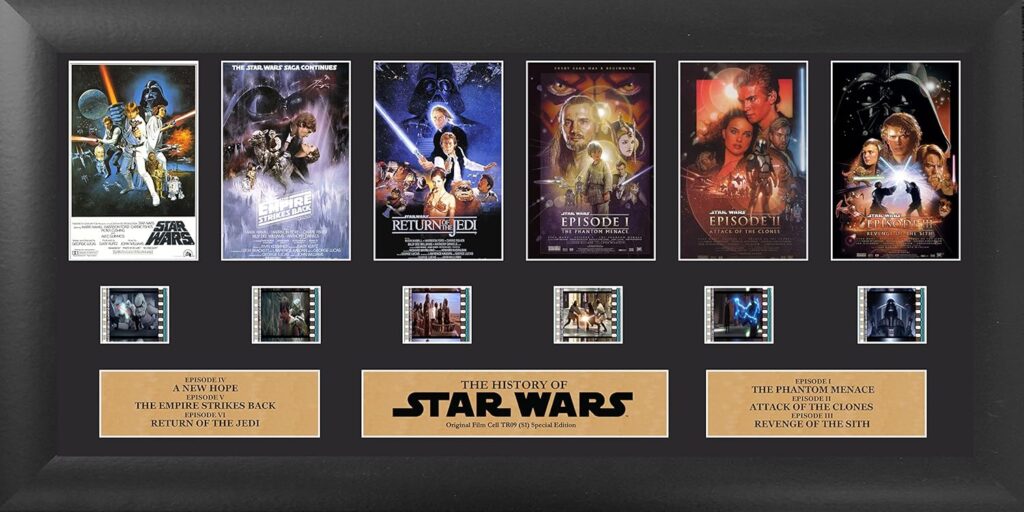
Star Wars Luke Skywalker Lightsaber LED Light | Star Wars Decor | 23 Inches
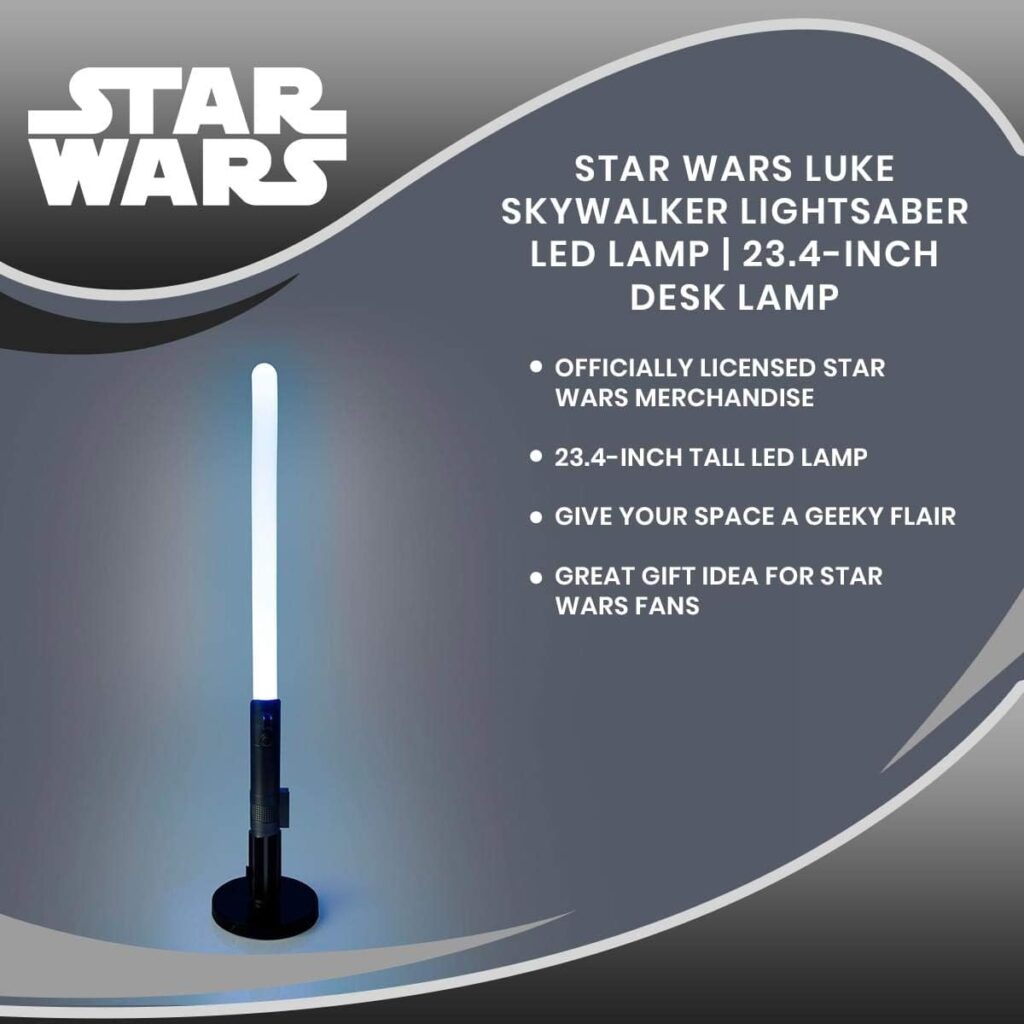
LEGO Star Wars Millennium Falcon A New Hope 25th Anniversary Collectable Model

Conclusion
The impact of Star Wars in 1977 cannot be overstated. What began as George Lucas’s ambitious space opera transformed Hollywood’s entire landscape—from revolutionizing special effects and sound design to creating the blockbuster template that still dominates today’s film industry. The film didn’t just break box office records; it fundamentally changed how movies were made, marketed, and merchandised, establishing a cultural phenomenon that transcended the theater experience.
Nearly half a century later, Star Wars remains more than just a nostalgic memory—it’s an active blueprint for modern cinema’s approach to franchise building, visual storytelling, and audience engagement. Whether you’re a filmmaker inspired by its groundbreaking techniques, a studio executive following its business model, or simply a fan captivated by its enduring universe, Star Wars continues to shape our entertainment landscape. The Force that awakened in 1977 is still with us, proving that truly revolutionary art doesn’t just entertain for a moment—it alters our cultural DNA forever.
For more AI-powered historical insights, explore Time Genius’s interactive timeline tool.
